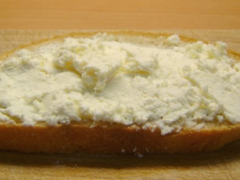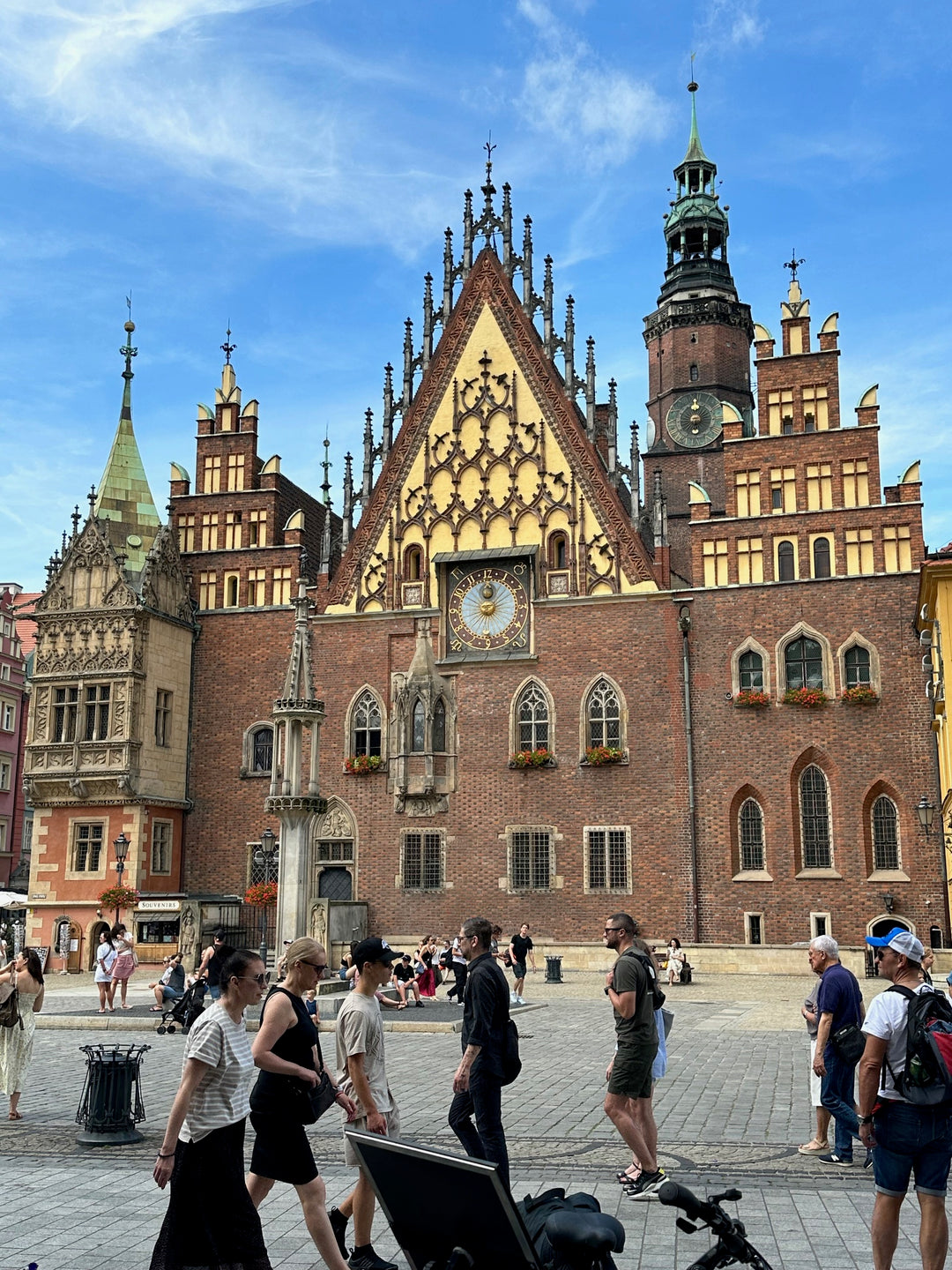Popular Polish Cheese in Poland - From Oscypek to Twarog
Poland is known for its rich culinary traditions, and one of the most beloved foods in the country is cheese. In this "cheesy adventure", we'll uncover the seven most popular cheeses in Poland. Cheesy puns aside, let's dive into the delicious world of Polish cheese! 🧀
Say Cheese, Polish Style: Polish Cuisine and Cheeses in Poland
Polish cuisine is renowned for its hearty and flavorful dishes, often incorporating unique ingredients that reflect the country's rich cultural heritage. It is a key ingredient of many classic Polish food dishes. Cheese is integral to many classic Polish culinary creations, from savory dishes like cheese pierogi to delectable desserts.
In Poland, cheese has been a beloved food product for centuries. It is thought to have originated during medieval times as a way to preserve surplus milk. Today, a wide variety of cheeses are produced in Poland, each with its own distinct characteristics and flavors.
Besides its role as a filling in savory dishes, cheese also adds a delightful touch to Polish desserts. Sweet pierogi, also known as "pierogi z serem," is a popular dessert option in Poland. The filling for these is made with a sweetened version of twaróg cheese mixed with sugar, vanilla, and sometimes raisins.
Cheese is not only enjoyed on its own or as part of Polish dishes but also an ingredient in many classic Polish desserts. "Sernik," a traditional Polish cheesecake made with twaróg cheese, eggs, and sugar and often flavored with lemon or vanilla. Sernik has a dense and creamy texture and is typically served with a dusting of powdered sugar or a fruit sauce.
In addition to its role in specific dishes and desserts, cheese also serves as an ingredient in numerous other Polish food products. It is a common topping for open-faced sandwiches, known as "kanapki," and is often paired with pickles, tomatoes, and cold cuts. Cheese is also grated over salads or used as a filling in crepes, adding a burst of flavor and richness to these dishes.
Polish cheese is treasured for its unique flavors and versatility in savory and sweet recipes. Cheese plays an integral role in Polish cuisine, whether it's the tangy taste of curd cheese in savory pierogi or the creamy sweetness of cheesecake. So, the next time you sample a Polish dish, be sure to savor the rich, delightful flavors that cheese brings to the table.
Oscypek Cheese
Oscypek is a unique and renowned smoked cheese made from sheep's milk, originating from the Podhale region in the Tatra Mountains in Poland. This traditional cheese has distinctive characteristics that set it apart from other types of cheese. It has a distinct smoky flavor and a slightly salty taste, which is achieved through the process of cold-smoking the cheese over a mixture of juniper and pine wood. The cheese is molded into a distinctive oval shape with a decorative pattern carved on the surface. This shape is aesthetically pleasing and serves the functional purpose of allowing better air circulation and even smoking. Oscypek has a firm and dense texture, making it suitable for grilling or frying. Its unique taste and texture have made it a favorite among locals and tourists.
The regional significance of oscypek in the Tatra Mountains is immense. The cheese has been a part of the local culture and tradition for centuries. It plays a vital role in the region's economy, as many small-scale farmers and shepherds rely on sheep farming and cheese production for their livelihoods. The production of oscypek also contributes to preserving the traditional way of life in the Tatra Mountains. The cheese is often made by hand using traditional methods passed down through generations. Many shepherds still follow the ancient practice of grazing their sheep in the mountain pastures during the summer months, providing them with fresh grass and herbs, which ultimately influence the flavor of the cheese.

Furthermore, oscypek has received a Protected Designation of Origin (PDO) status from the European Union. This designation ensures that only cheese produced in the designated region and following specific production methods can be called oscypek. It helps preserve the cheese's authenticity and quality, protecting it from imitation or mass production. The PDO status has raised the international recognition of oscypek. It has led to an increase in demand for this unique cheese. Overall, oscypek holds a significant place in the Tatra Mountains, both for its cultural and economic importance, and its protected status assures its continued production and appreciation for future generations.
Gołka Cheese
Gołka cheese is a cheese originating from the Podhale region in southern Poland. It is known for its unique shape and exceptional flavor. The cheese is made is made exclusively with milk from cattle, which gives it a creamy and slightly tangy taste. Gołka cheese has a dense and firm texture, making it perfect for grilling or frying. Its origin can be traced back to the Tatra Mountains, where the local shepherds traditionally made it. The name "Gołka" refers to the tools used to make the cheese – long wooden molds that were used to shape the cheese into distinctive cone shapes.
Regarding flavor, Gołka cheese offers a delightful combination of rich creaminess and a slightly sharp note. The cow's milk provides a smooth and mild taste, while the sheep's milk adds a distinct tanginess. This unique combination makes Gołka cheese a versatile ingredient in various dishes. It can be enjoyed on its own or used in recipes such as pierogi, soups, or as a topping for grilled meats. The cheese also pairs well with fruits, crackers, and crusty bread.

Golka Cheese - White cheese above
Redykołka Cheese
Redykołka cheese is a Polish cheese from the Podhale region in the southern part of the country. It is a type of smoked cheese with a unique and distinct flavor. Redykołka cheese is typically made using the leftover Bundz from Oscypek production, which gives it a rich and robust flavor. The origins of Redykołka cheese can be traced back to the traditional methods of cheese production in the highlands of Poland. It is believed that the cheese has been made in the region for centuries, with each generation passing down the techniques and recipes to the next.
The flavor of Redykołka cheese is complex and delicious. It has a smoky, slightly tangy taste and somewhat creamy and crumbly texture. The cheese is often compared to other smoked cheeses like cheddar or gouda. Still, it has its own unique characteristics that set it apart. The smoking process gives the cheese a distinctive aroma that adds depth to its flavor profile. It pairs well with various accompaniments, such as crusty bread, pickles, or charcuterie.
Redykołka cheese is a true testament to the culinary heritage of the Podhale region. It showcases the people's resourcefulness in using leftover ingredients to create a delicious and satisfying cheese. The production of Redykołka cheese is a labor-intensive process that requires skill and patience. The cheese is formed into small, round shapes and then smoked over hot embers for several hours. This slow smoking process allows the flavors to develop and intensify, resulting in a cheese bursting with flavor. Redykołka cheese is a beloved staple in the region and is often enjoyed as a snack or as part of a traditional Polish meal. Its rich history and unique flavor make it a must-try cheese for any cheese enthusiast.
MOs810, CC BY-SA 4.0, via Wikimedia Commons
Bryndza Cheese
Bryndza cheese is a traditional cheese made from sheep's milk with a rich history and unique qualities. It originated in Slovakia, Romania, and Hungary mountainous regions and has been a staple in their culinary traditions for centuries. The production process of bryndza cheese involves fermenting sheep's milk with specific bacteria, giving it a distinct tangy flavor. This cheese then ages for several weeks, developing a creamy and smooth texture. Its taste, texture, and production process set bryndza cheese apart from other cheeses. Bryndza cheese has a tangy and slightly salty flavor and the texture is soft and creamy, perfect for spreading on bread or stirring into sauces.

Twarog Cheese (Polish Farmer's Cheese)
Also known as Polish Farmer's Cheese and sometimes as Polish curd cheese, it is a type of fresh white cheese. It is known for its creamy texture and mild flavor, making it a versatile ingredient in various dishes. Made from cow's milk, twaróg has a smooth and spreadable consistency that is perfect for spreading on bread or adding to recipes like cheesecakes or sweet cheese pierogi. Its mild flavor allows it to be used as a base for both sweet and savory dishes, making it a staple in Polish cuisine.
In addition to its delicious taste and versatility, twaróg cheese is also packed with nutritional value and health benefits. It is a good source of protein, calcium, and vitamins like riboflavin and vitamin B12. Protein is essential for muscle growth and repair, while calcium helps maintain strong bones and teeth. Riboflavin and vitamin B12 are essential for maintaining a healthy metabolism and nervous system. Twaróg cheese is also low in fat, making it a healthier alternative to other cheeses. It is an excellent option for those conscious of their calorie intake but still want to enjoy the creamy and rich taste of cheese.
Due to its nutritional value and health benefits, twaróg cheese is often recommended for pregnant women, children, and individuals looking to maintain a healthy diet. It provides essential nutrients for proper growth and development, especially during pregnancy and childhood. Moreover, its mild flavor and creamy texture make it an excellent choice for introducing dairy products to young children. Overall, twaróg cheese is delicious and versatile and a nutritious option that people of all ages can enjoy.
Królewski Cheese
Królewski cheese is a Polish cheese originating in northwestern Mazovia and now also popular in Podlaskie. It is a semi-hard cheese made from cow's milk and is often compared to Swiss cheese due to its distinctive holes or "eyes." The cheese has a pale yellow color and a smooth, creamy texture, making it a popular choice for snacking and cooking. The flavors of Królewski cheese are rich and savory, with a slightly sweet and nutty undertone. It has a mild yet distinct taste that is bound to please even the most discerning cheese connoisseurs. It is typically aged for around four to six months, allowing it to develop a complex flavor profile and a firmer texture.
This aging process also contributes to creating the cheese's unique holes, which result from the carbon dioxide released during fermentation. The cheese is shaped into large, round wheels, weighing approximately 10 kilograms, and is often vacuum-sealed to preserve its freshness. Królewski cheese can be enjoyed as a simple snack, sliced and added to sandwiches or burgers, or melted into dishes like fondue. It pairs wonderfully with various accompaniments, such as fresh fruits, cured meats, and artisanal bread.

Due to its versatile nature and delicious taste, it has gained popularity in Poland and international markets. It has become a staple cheese in many households and has been embraced by cheese lovers worldwide. Whether you're a fan of mild, creamy cheeses or prefer bolder, more complex flavors, Królewski cheese will satisfy your cravings and add a touch of Polish charm to your meals.
Koryciński Cheese
Koryciński cheese, also known as "ser koryciński Swojski" in Polish, is a cheese that originates from the village of Korycin in northeastern Poland. This cheese is made from cow's milk and has a soft and creamy texture. It is often compared to Camembert or Brie in terms of its consistency. It has a pale yellow color with a thin, white rind on the outside. The cheese is aged for several weeks to develop its distinctive flavor.
The flavor of Koryciński cheese is rich and buttery, with a mild and slightly tangy taste. It has a creamy and velvety texture that melts deliciously in the mouth. The cheese has a pleasant aroma reminiscent of fresh milk and mushrooms. The taste of the cheese becomes more pronounced and complex as it ages. Initially, the flavors are mild and delicate, but they become stronger and more intense with time.
It has a long history and is deeply rooted in Polish culinary traditions. It is believed to have been made in the Korycin region for centuries, using traditional methods passed down through generations. The cheese-making process involves using fresh, high-quality cow's milk, which is heated and combined with rennet to curdle the milk. The curds are then cut, drained, and shaped into rounds. Afterward, the cheese is left to age in cool cellars for several weeks, allowing it to develop its unique flavor and texture.
Koryciński cheese is a versatile ingredient that can be enjoyed in various ways. It can be eaten on its own, spread on bread or crackers, or used as a topping for salads and other dishes. The cheese pairs well with fruits, such as apples or pears, and can be paired with a glass of dry white wine. Its creamy and flavorful profile makes it a popular choice for cheese boards and platters. This cheese is a true delight for cheese lovers and a testament to the rich culinary heritage of Poland.
MOs810, CC BY-SA 4.0, via Wikimedia CommonsCheck out our other articles on Polish food and the Poland Christmas Markets.







Leave a comment